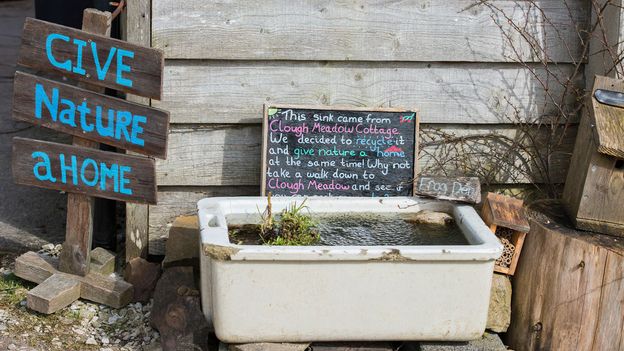When the BBC’s Katherine Latham made a pond with just a plant pot, some rocks and a few native pond plants, she was amazed at the speed wildlife moved in.
“I hope we get frogs and newts, and animals of all kinds,” said my son, 11-year-old Billy, as we carefully prized apart the roots of a pond plant we were trying to split into three, before plopping them into the water.
It was a sunny Sunday at the beginning of March, in my back garden in Gloucestershire, UK, and my children and I were making three mini ponds. We’d taken three cheap plastic plant pots and dug two of them into the ground, and stood the third surrounded by plants. When then lined them with rocks and filled them with water, rocks and native pond plants.
We were hopeful wildlife would come but, at the same time, apprehensive that – in the midst of a biodiversity crisis – nothing would find its way to our little oases. Then, just one week later, we noticed spiders and insects had begun to visit. Ants were crawling about the edge. Hover flies, bumblebees and ladybirds flittered nearby.



would recommend some measures against mosquitoes then
ive been thinking about using chlorine tablets but thats too harsh for the vegetation i have in there - besides the whole woods around my house is a breeding ground for mosquitos - they are bad every year no matter what lol - at least we dont have mosquitos that carry disease up here
oof. godspeed 🫡
i’ve heard good things about propane CO2 traps but they’re a big investment
yeah thanks for the tip - even with the potential mosquito problems its so nice having a bit of biodiversity in my lawn